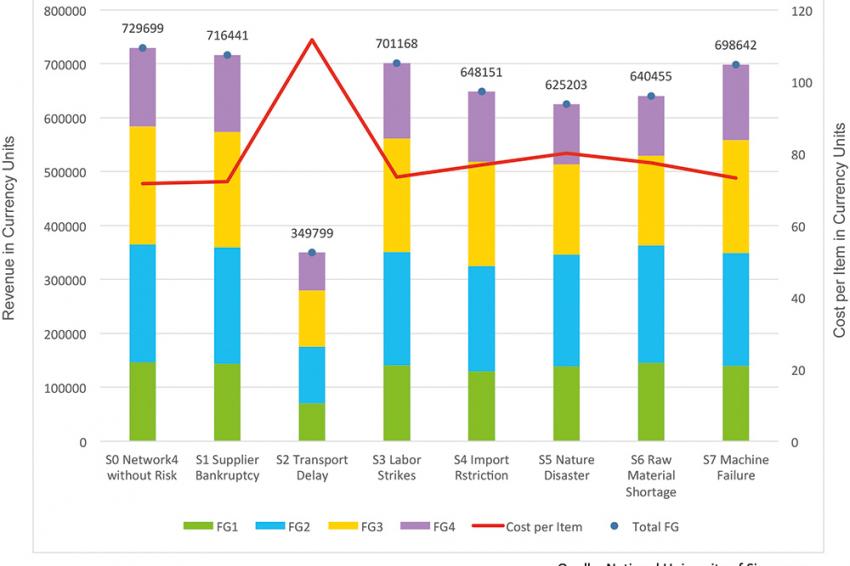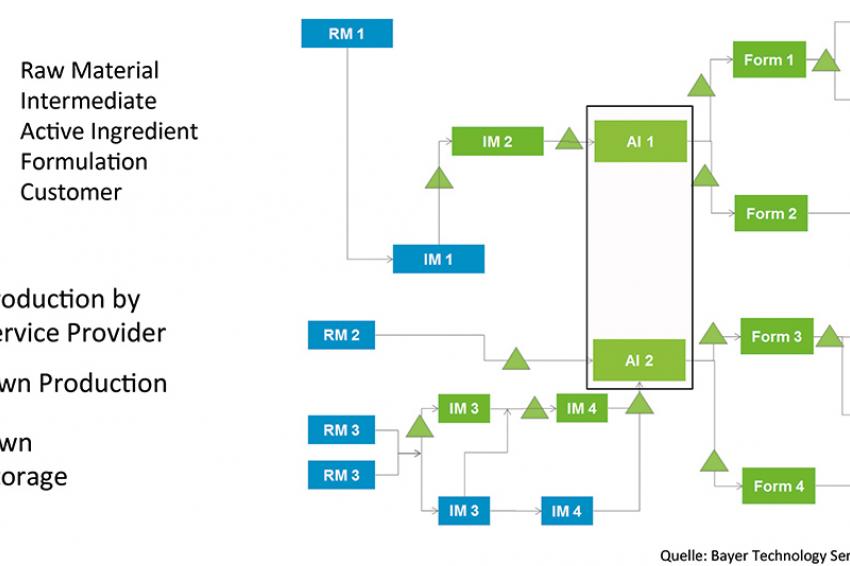Quantitative Supply Chain Risk Management
Research Project to Indicate and Measure the Effect of Supply-Chain Risks
Certainly it is no big secret that in the process industry supply chains are becoming more complex all the time. For example, parts of the value-added chain that are outside a company’s core competencies or not particularly profitable are often carved out or relocated to low-wage countries. End customers expect immediate or just-in-time personalized goods delivery. The end-to-end supply chains created are highly networked systems, fragmented and operated by a large number of diverse companies in various regions with different political systems.
The potential risks affecting these supply chains are growing steadily along with the complexity of these networks, though. Raw material supply bottlenecks, strikes, environmental disasters, regulatory changes and infrastructure problems are just a few of the risks that need to be taken into account. In addition to this, complex global supply chains are increasingly undergoing optimizations that can have unexpected consequences on risks. Although initiatives to reduce stock levels have a positive influence on working capital, for instance, they also typically make supply chains more susceptible to risks.
There are numerous examples showing that these risks can have significant consequences for companies forming part of these supply chains. The most widely known is probably the fire in 2000 at the Philips microprocessor production facility in New Mexico. Among other things, this facility made the microprocessors for cell phone companies Nokia and Ericsson. Ericsson trusted the predictions that microprocessor production would start again shortly and took no further action. Nokia’s supply-chain concept, on the other hand, was far more flexible and enabled another supplier to be brought in immediately. As a result, Ericsson recorded sales losses of $400 million, while Nokia’s profits for the same year rose by 42%.
Questions and Problem-Solving Approach
This issue throws up numerous questions for entrepreneurs and supply-chain managers. What risks are my supply chains exposed to? Which of these risks are particularly critical for my business success? Which supply chains are especially at risk? Can I put a monetary value on the individual risks? Can I measure the effect of various improvements and calculate the effects on the supply chain?
These questions were addressed by the National University of Singapore (NUS) and Bayer Technology Services in a research project. The goal was to find a method based on a mathematical model for indicating the effect of supply-chain risks and enable these to be measured using appropriate indicators. The research focused on typical supply chains involving basic production and supply processes for manufacturing crop protection agents (see figure 1 for one of these networks). The supply chains of two different products are linked by joint use of the same production resources for active ingredient production.
An overview of the results of this joint research project is provided below. Further research activities are required to validate the method and make it suitable for wide-ranging applications.
Risk Identification and Assessment
Preliminary work by the NUS and other studies identified 110 different risks that are relevant to supply chains in the process industry. These risks can be classified, for example, into macro, industry and company levels with relevant sub-categories and summarized. Seven of these risks were selected as being particularly relevant for the joint research project.
There are numerous established procedures for assessing risks. Typically, they involve making statements about the frequency of occurrence and the severity of effects. Without doubt Failure Modes and Effects Analysis (FMEA) is the method most commonly used in practice. Experts estimate the probability, severity and detection values for each risk. By its very nature, this estimate is approximate and subjective. To make the procedure more objective, the research team developed an improved FMEA process (by using fuzzy set theory). This approach is still inaccurate, is confined to the part of the supply chain under consideration, and cannot provide an adequate picture of the influence on the entire supply chain and the associated monetary risks.
Simulation of Supply Chain Risks
To make genuinely quantitative statements about the monetary effect of risks on the entire supply chain, the research team developed simulation processes based on statistical models and successfully verified these using the network examples.
The first step was to model the occurrence of the risks under consideration using probability distributions. Dozens of statistical functions (such as exponential, Gaussian and Weibull distributions) are available to characterize the risk parameters TTF (time to failure) and TTR (time to recovery). In most cases, these parameters are easy to model or estimate using historical data from the companies involved (e.g., failure statistics for plant components, delivery reliability of suppliers) or public databases (e.g., for environmental disasters or strikes).
Software tools to simulate production and logistics networks make it possible to calculate the effect of these risks on the entire supply chain. The results are probability distributions for all state variables within the supply chain, which are then analyzed using statistical indicators such as mean, variance or skewness. The value at risk (VaR) approach familiar from finance is another such factor. VaR describes the maximum monetary loss for a given probability (for example, not more than $100 million in 95% of all cases). Research is still ongoing to determine whether and how this concept can be transferred to process-industry supply chains.
Figure 2 shows a result for the network in figure 1 by way of an example. In this case, the mean number of products sold and the average unit costs derived on that basis were analyzed. The graphic shows that in this example, the effect of strikes or machine failures is negligible compared with transport delays.
Risk Mitigation
To significantly reduce the risks of this specific network, consideration should be given, for example, to using redundant logistics service providers and/or increasing stock levels. However, this immediately raises further questions: Which of the conceivable measures are the most effective? Can I produce a cost/benefit analysis to demonstrate the effect of the various measures? And what exact form should these measures take? For example, which storage locations would need to be expanded? And what additional quantities should they hold? Might there also be storage locations where I could reduce stock levels without increasing the risk to the supply chain?
Scenario analyses can be used to answer these questions based on the quantitative procedure described. This produces ideal mitigation strategies that can be assessed in monetary terms.










